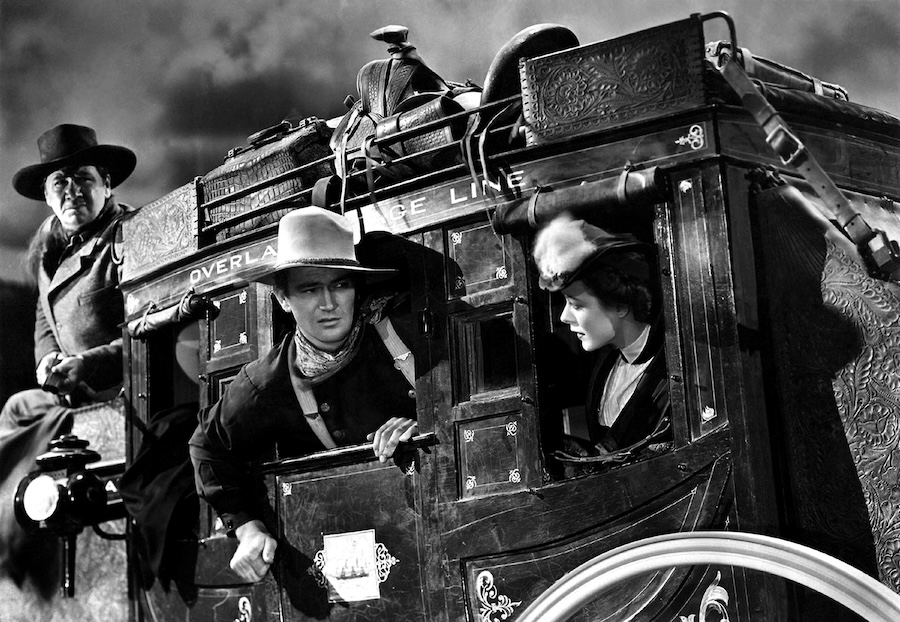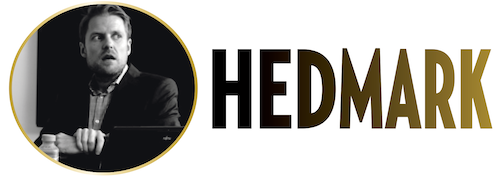
DANGER HOLDS THE REINS AS THE DEVIL CRACKS THE WHIP! DESPERATE MEN! FRONTIER WOMEN! RISING ABOVE THEIR PASTS IN A WEST CORRUPTED BY VIOLENCE AND GUN-FIRE!

Today, we remember John Ford as a great director of Westerns. In 1939, that wasn’t really the case. Ford hadn’t made a Western since his days as a director of silent pictures when, admittedly, he made a great number of them. As he decided to return to that genre, turning an Ernest Haycox story into a movie, he had a hard time selling the project to a Hollywood studio. Producers David O. Selznick and Walter Wanger didn’t like Ford’s ideas of who would star in the movie. John Wayne wasn’t very well known and Wanger wanted Gary Cooper.
In the end, a compromise was reached, Stagecoach became a grand Western comeback for Ford, and one of the genre’s most masterful examples.
Headed to Lordsburg, New Mexico
The year is 1880 and we’re in Arizona. A stagecoach is headed to Lordsburg, New Mexico and a group of strangers are about to board. They include the alcoholic Doc Boone (Thomas Mitchell), a prostitute (Claire Trevor) who’s being driven out of town, a woman (Louise Platt) of good standing who will be reunited with her cavalry officer husband, a whiskey salesman (Donald Meek), an ill-tempered banker (Berton Churchill) and a notorious gambler (John Carradine). Along for the ride is marshal Curley Wilcox (George Bancroft) who has a feeling that they might run into a fugitive bandit, Ringo Kid (John Wayne). As if that’s not enough, the party also learns that Geronimo and his Apaches are on the warpath…
Looking for a new life in the West
There were similarities in Haycox’s original story to Guy de Maupassant’s classic ”Boule de Suif”, which also depicted a motley group of passengers in a stagecoach. That tale focused on the Franco-Prussian War, but Stagecoach has a similarly brutal context in the shape of the American West and the conflict between white settlers and Native Americans. Later film historians have seen a lot more symbolism to the film than was perhaps obvious at the time of its premiere. The passengers are all interesting in different ways and represent the kind of people that looked for a new life in the West – and no one is perfect, for sure. The banker secretly embezzled money and the man who acts like a fine Southern gentleman is actually a gambler. The only person in that coach who looks like an angel is Lucy Mallory. She’s treated by everyone like royalty, but her contempt for Dallas shows a side of her that’s anything but Christian. Things change as the journey progresses though and the passengers realize that they’re in this together.
John Ford has the perfect way of introducing John Wayne to the world in his first scene
This is a brilliant cast, including Trevor as a woman who’s simply trying to survive in a very inhospitable world, Mitchell as the drunk who’ll rise to the occasion when needed, Meek as the mild-mannered salesman… and then there’s John Wayne. Ford has the perfect way of introducing him to the world in his first scene, as the stagecoach makes a sudden stop and the camera zooms in on Wayne, standing there on the dusty road with his rifle. The perfect Western icon. It’s now part of cinema history, helping make him a huge star, even though he really wasn’t a stranger; Wayne landed his first leading role way back in 1930.
The intrigue between the passengers is entertaining enough, but the film also has great action during the Apache attack. A scene involving the famous stuntman Yakima Canutt dragged underneath the stagecoach has become legendary and deservedly so. Monument Valley locations and a music score based on popular folk songs are other outstanding ingredients.
As in the case of Gone With the Wind the same year, Stagecoach has racist issues that can’t be ignored. It is our duty to acknowledge how Native Americans are depicted in the film, but also to cherish it for its cinematic qualities.
Stagecoach 1939-U.S. 96 min. B/W. Produced and directed by John Ford. Screenplay: Dudley Nichols. Short Story: Ernest Haycox (”The Stage to Lordsburg”). Cinematography: Bert Glennon. Music: Richard Hageman, W. Franke Harling, John Leipold, Leo Shuken. Editing: Otho Lovering, Dorothy Spencer. Cast: Claire Trevor (Dallas), John Wayne (Ringo Kid), Andy Devine (Buck), John Carradine, Thomas Mitchell, Louise Platt, Donald Meek.
Trivia: Remade as Stagecoach (1966) and a TV movie, Stagecoach (1986).
Oscars: Best Supporting Actor (Mitchell), Music.
Last word: “I did the location scenes first. I had driven through Monument Valley, and I thought it would be a good place to shoot a Western. I used it for the first time in Stagecoach. There was a dry lake that was perfect for the Indian attack. We didn’t have any camera cars in those days; we just put the camera on an automobile and shot on the run. It was fast. I asked the driver how fast we had gone, and he said 40 to 42 miles per hour. You wouldn’t think that horses could go that fast, but they did.” (Ford, DGA Quarterly Magazine)
